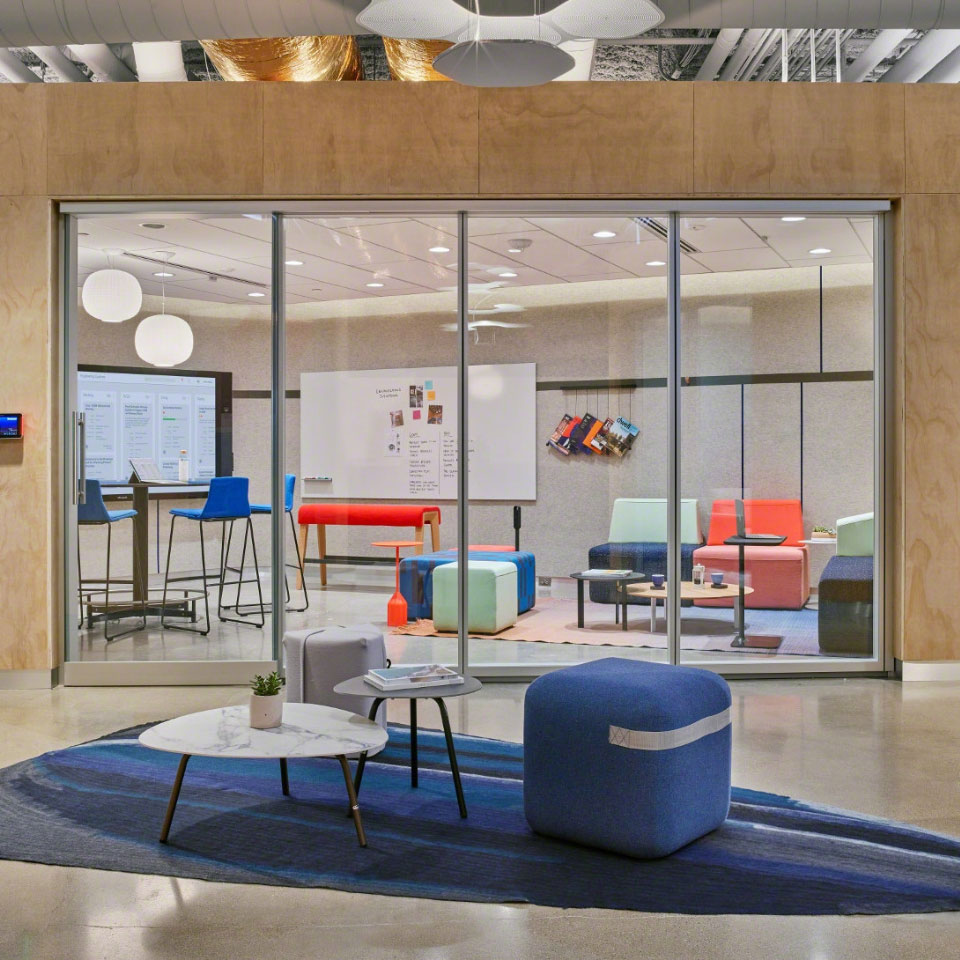Over the past couple of years, agile working has made a real impact on the modern working world. It has become widespread, common knowledge and a concept that many businesses are now acknowledging the benefits of.
That said, as it gains popularity as an approach to both office design and workplace culture, agile working has diversified in terms of definition and how different people, businesses and industries embrace it.
First, let’s make sure we’re all on the same page…
A loose definition of agile working:
Agile working is a modern approach to work which breaks down conventional practices around where, when and how staff work.
It takes the restrictions that come with traditional working environments and removes them in favour of increased choice and control for employees.
This includes factors such as:
- An employee’s location, be that in the world or in the workplace itself
- The furniture or work setting an employee chooses to use for a specific task
- Making facilities available around the clock to support more fluid working hours
- Technology which means staff can stay connected even when they’re not in the same room

Is agile working the same as flexible working?
When thinking about what this style of working means to different people in different sectors, it’s important to recognise the difference between flexible working and agile working.
While flexible working aims to cater for personal convenience around things like working hours, agile working is a more of a general company culture change.
Agile working is about evolving attitudes, processes and behaviours in order to make staff happier, healthier, more connected and ultimately, more productive.

So…
Now you’re up to speed with the general idea of what an agile workspace is, let’s explore some of its most common interpretations…
Allowing more freedom and fostering trust
This is where office design and workplace culture are intrinsically connected. Allowing staff more choice and control around where, when and how they work will foster an environment of trust in which employees feel responsible for their own performance.
Senior staff become more like mentors rather than leaders as the professional hierarchy relaxes somewhat and communication lines open up. When this happens, employees feel they have autonomy over their own roles and are therefore more motivated and engaged.
The ability to move around the workspace more freely
As well as more cultural flexibility, for many staff, agile working also means being able to take a more nomadic approach by moving between various settings throughout the day and adopting different postures as they see fit.
For example:
Someone might want to spend the first half of their day working in a quiet, individual focus room away from noise and visual distraction.
They may then want to come together with a group of colleagues in the afternoon to present and discuss their ideas in a collaborative and stimulating setting equipped with the appropriate technology.
Click for our advice on how to design an agile workspace.
Improved collaboration and communication with colleagues
Gone are the days of having to pull up a chair and crowd around one computer screen in order to collaborate, share ideas and brainstorm with colleagues.
Agile working means small or large groups of staff can breakaway from their chosen workstations to come together in a purpose-built setting which caters for streamline communication and equal participation.
Office technology and commercial furniture play a massive part in making this possible and giving rise to multifunctional work areas such as collaboration zones and breakout areas.
The opportunity to work remotely (or from home)
Advancements in workspace technology mean that staff no longer need to be tethered to the office in order to meet or communicate with colleagues and clients.
Video conferencing facilities – to name just one example – are a great way to ensure mobile and resident workers stay connected.
Working remotely, or from home, is therefore a far more viable option – a big selling point when it comes to attracting and retaining young talent who want more consideration for the work-life balance.

More cost-effective office design
All of the above interpretations are direct benefits for employees which will, in turn, have knock-on advantages for their employers. One of the biggest pros of agile working for business owners and employers though is the potential to save money on things like overheads and tenancy costs.
Having staff work in more mobile, nomadic ways means ‘bums on seats’ can fluctuate according to task, requirement and demand. No longer do businesses need to pay the price for assigned workstations as office occupancy ebbs and flows.
